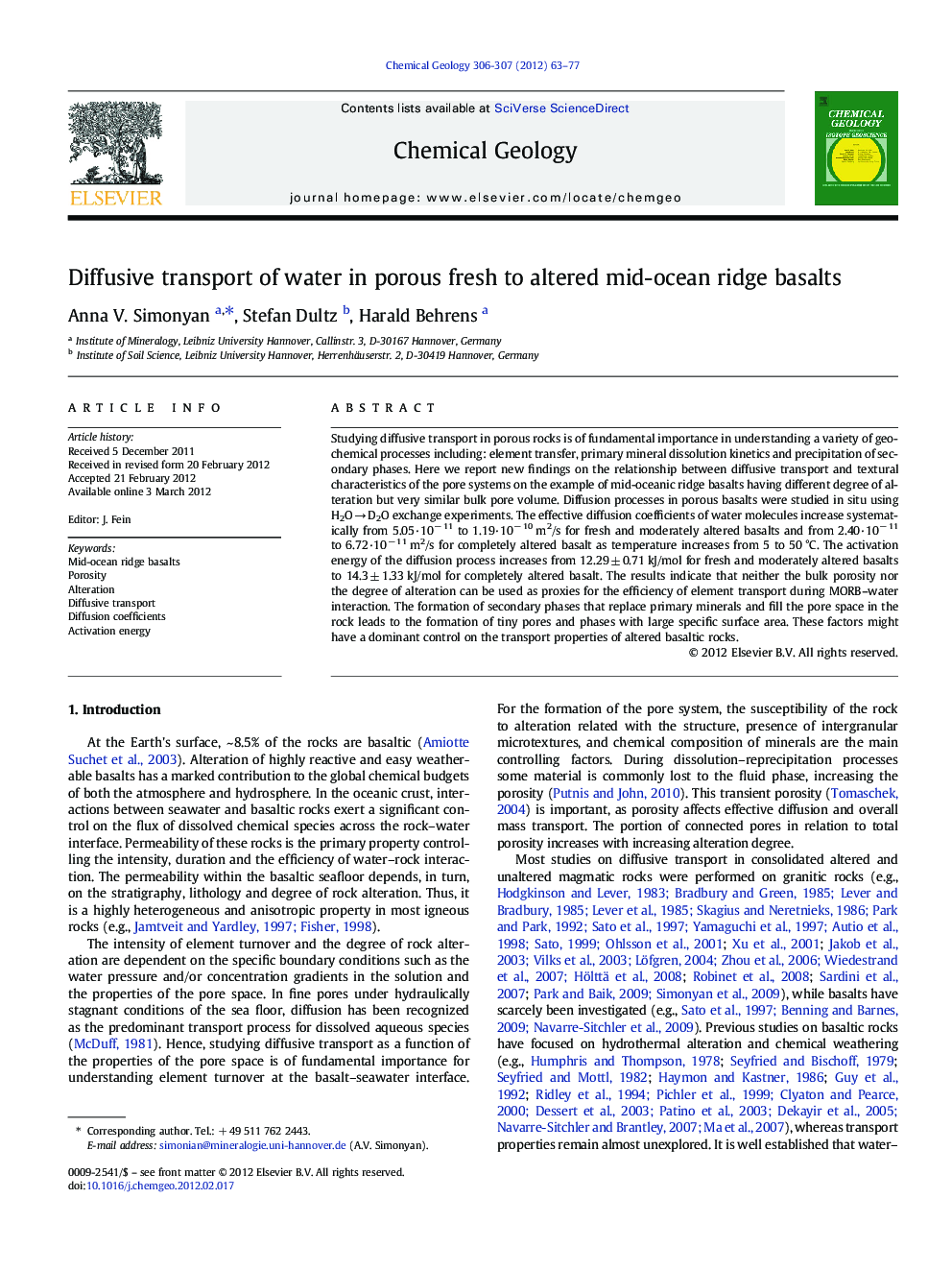| کد مقاله | کد نشریه | سال انتشار | مقاله انگلیسی | نسخه تمام متن |
|---|---|---|---|---|
| 6436996 | 1637647 | 2012 | 15 صفحه PDF | دانلود رایگان |

Studying diffusive transport in porous rocks is of fundamental importance in understanding a variety of geochemical processes including: element transfer, primary mineral dissolution kinetics and precipitation of secondary phases. Here we report new findings on the relationship between diffusive transport and textural characteristics of the pore systems on the example of mid-oceanic ridge basalts having different degree of alteration but very similar bulk pore volume. Diffusion processes in porous basalts were studied in situ using H2O → D2O exchange experiments. The effective diffusion coefficients of water molecules increase systematically from 5.05·10− 11 to 1.19·10− 10 m2/s for fresh and moderately altered basalts and from 2.40·10− 11 to 6.72·10− 11 m2/s for completely altered basalt as temperature increases from 5 to 50 °C. The activation energy of the diffusion process increases from 12.29 ± 0.71 kJ/mol for fresh and moderately altered basalts to 14.3 ± 1.33 kJ/mol for completely altered basalt. The results indicate that neither the bulk porosity nor the degree of alteration can be used as proxies for the efficiency of element transport during MORB–water interaction. The formation of secondary phases that replace primary minerals and fill the pore space in the rock leads to the formation of tiny pores and phases with large specific surface area. These factors might have a dominant control on the transport properties of altered basaltic rocks.
► Diffusion processes in porous basalts were studied in situ using H2O → D2O exchange experiments.
► The alteration of basalts leads to the formation of tiny secondary minerals.
► Clay mineral assemblages in the pore volume lead to creation of numerous nm-size pores.
► Most important factor influencing the diffusivity of solute species in the porous basalts is the pore size distribution.
Journal: Chemical Geology - Volumes 306–307, 4 May 2012, Pages 63–77